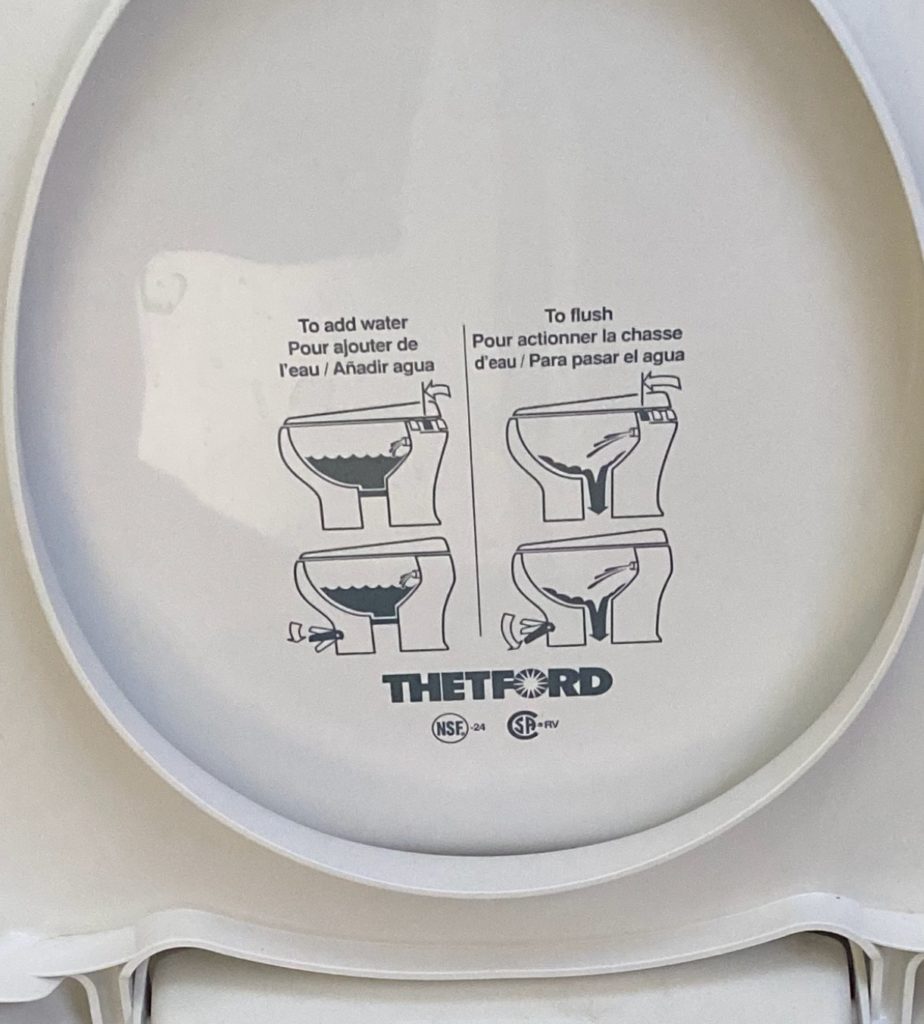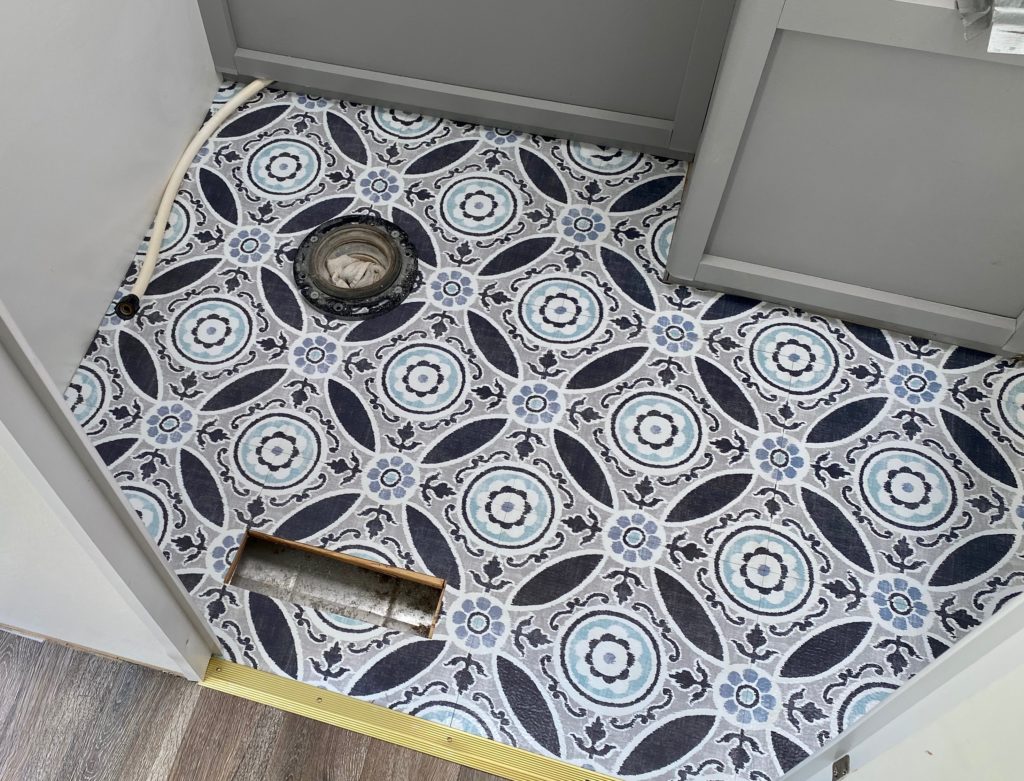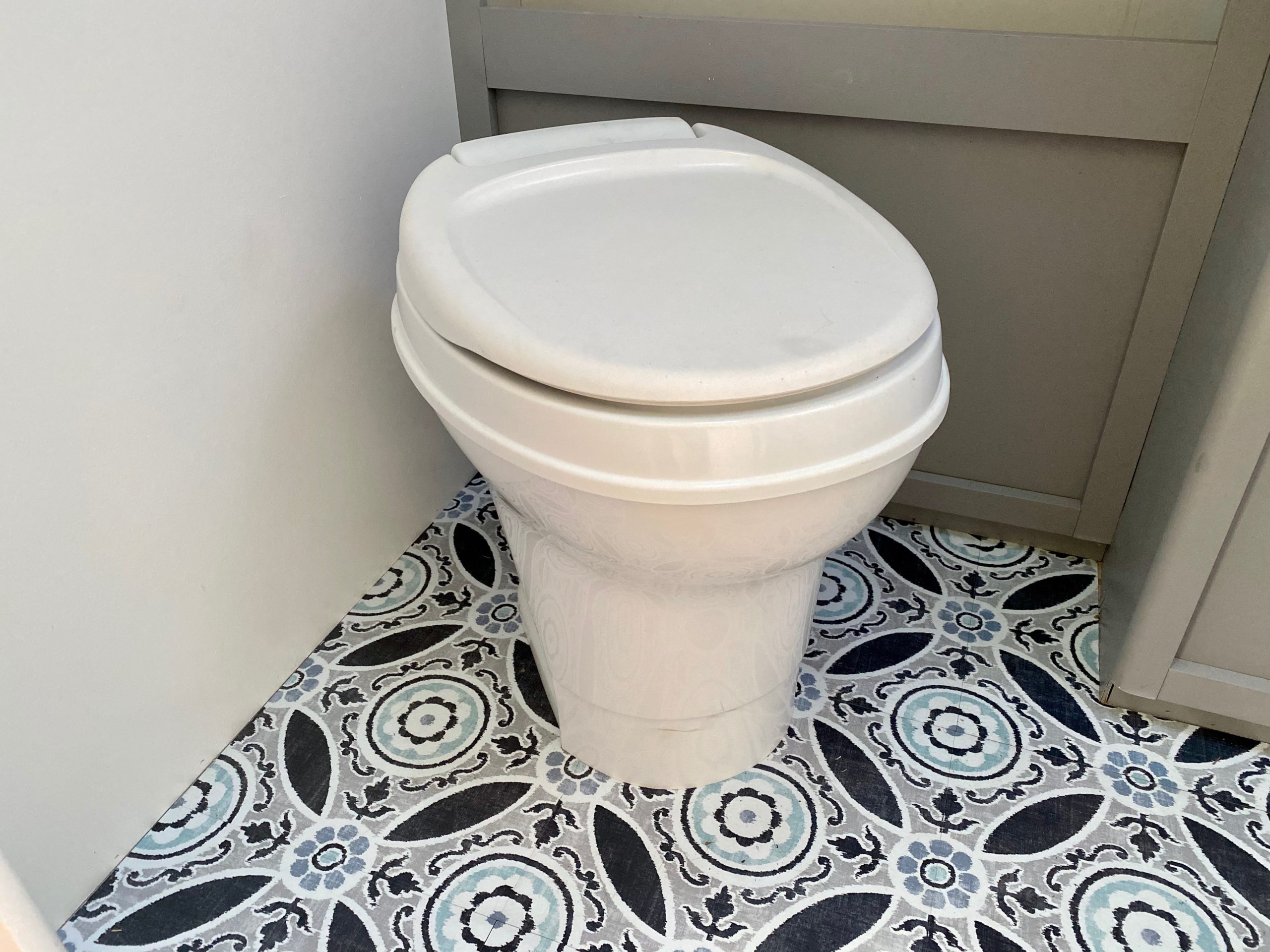However, this raises a lot of concerns since RVs are not stationary like houses.
With a few tweaks in plumbing and wiring, you cannot replace an RV toilet with a regular toilet. However, this presents a new set of challenges because a regular toilet is heavier and takes more space. Also, regular toilets have a different flushing system and require more water for flushing.
In the rest of this article, we’ll go into more details on why it is not advisable to replace your RV toilet with a regular toilet.
We’ll also explore other RV toilet replacement options and tips on installing them.
Why You Should Not Install a Regular Toilet on Your RV
As mentioned earlier, it is not practical to use a regular toilet in an RV. While RVs and household toilets may have the same use, they do not work in the same way, and there are several reasons you should not use them.
Household Toilets Are Constructed With Different Materials
Regular toilets are constructed with porcelain or a special clay known as vitreous china.
Most RV toilets are made out of hard and durable plastic such as polyurethane.
The weight and large footprint of a household porcelain toilet can make it unsuitable for an RV.
This difference is an important consideration since RVs typically don’t have as much as a house.
It also features a heavy tank that is only held onto the walls by two small bolts.
This connection could cause a nuisance in an RV as the vehicle bounces and sways on the road.
Bumps and curves in the road can also result in water spills, which can leak into the walls and floors of your motorhome, causing expensive damage in the long term.
Mode of Flushing Is Different in a Regular Toilet

You don’t necessarily have to be an RV expert before knowing that the flushing system in an RV toilet is different from a household toilet.
Most RV toilets feature a foot pedal flush system instead of the rather common handle flush system in regular toilets.
In foot pedal RV toilets, you’ll either need to completely step on the pedal to flush off the waste or partially step on it to fill it with water and completely step off the pedal to flush the liquid into the black tank.
The black water tank is the container installed on the underside of the RV. It holds all the waste from the toilet until you empty it into a sewer at a dump station or campsite.
Regular Toilets Use More Water
With a regular toilet, you’ll need more water to get the waste through the drain pipe.
Typically, household toilets require ½ to 1 gallon of water to flush the waste through the system.
RVs don’t use that much water to flush properly to the black water tank.
As a result, replacing an RV toilet with a regular toilet would mean filling your freshwater tank more often.
Your black water tank will also get filled up with waste faster, and you’ll need to empty it more often.
Other RV Toilet Replacement Options
Since a regular toilet is not a suitable option for an RV, there are other toilet systems you can choose from.
When choosing a toilet for your RV, consider the cost, your available space, toilet maintenance, and availability of dumping sites.
Traditional Gravity Flush Toilets
These toilets are similar to regular toilets and are the most suitable alternative for anyone considering replacing their RV toilet with a household toilet.
Unlike household toilets, these toilets don’t include a water tank, so they must be connected to an outside water source or your RV’s holding tank.
A gravity flush toilet is usually made with hard plastic and features a foot pedal flush system. It is installed directly over the black water tank.
As a result, the wastes go directly into the tank and don’t require much water to flush.
Composting Toilet
Composting toilets work differently from regular toilets. They don’t use any water, which makes them perfect for boondocking or you’re with little water.
These toilets don’t use a black water tank and instead decompose the solid waste into compost-like material in separate tanks.
The main advantage of compost toilets is their convenience and ease of use; however, they can produce a very bad odor if not used properly. They feature a vent fan, which helps to reduce the smell in the bowl.
Compost toilets may not be ideal for families or big eaters because you’ll need to change the tank more often.
Vacuum Flush Toilets
Vacuum flush toilet uses suction to remove the waste in the bowl. The content of the bowl is liquified and pumped into the black water tank.
This toilet system provides a comfort level similar to traditional flush toilets as it requires minimal water to flush.
Another advantage of a vacuum toilet is that it is odor-free and leaves no deposits in the pipe, saving costs on detergents.
The vacuum toilet can be installed away from the holding tank, making it suitable for use in any RV regardless of its size.
Portable Toilets
This toilet system is perfect for those with limited space in their RV and who want to avoid any plumbing connections. As the name suggests, they are portable and easy to install.
They are not fixed to a single spot; however, you’ll need to secure them down. A portable toilet is also the cheapest toilet option for RVers.
Compared to other RV toilets, portable toilets require more frequent dumping because the holding tank is small.
The holding tank sits under the bowl and is detachable for easy emptying.
However, portable toilets may freeze during winter, and some may have a lower seat.
Cassette Toilets
Cassette toilets are similar to portable toilets, but they are fixed in place. It uses a compact bowl that is installed over a removable water tank.
Also, the black water tank can be accessed through a panel or service door on the side of the RV. When you flush the waste, it goes directly into the tank.
These toilets usually come pre-installed and have tanks that can hold about 4.5 to 5 gallons of waste, meaning you’ll have to empty them more frequently.
The wastes have to be emptied at a dump station or into a standard toilet. After disposal, the tank is re-installed under the bowl.
You may also carry an extra tank with you to increase the capacity.
The main disadvantage of cassette toilets is that you’ll get close to the waste, seeing and smelling it as you dump it.
Other Important Tips When Replacing Your RV Toilet

As discussed earlier, there are several RV toilet options to choose from. Depending on how handy you are, you can replace your RV toilet by yourself.
Whether you’re replacing your RV toilet with a regular toilet, compost toilet, or traditional toilet, here are some tips to keep in mind:
- After selecting the toilet option that suits your RV and personal needs, measure your existing toilet space.
- Consider the mounting conditions of the old toilet. Did the old toilet use a flange? Note the exact measurements of the existing hole.
- Examine the floor and subfloor and repair any issues
- Before beginning the replacement, prepare the area where you removed the old toilet. Use rags or towels to clean the base and remove any floor wax or silicone.
- Empty the waste tank. After emptying it, remove all the plumbing that connects the tank to the old toilet.
- After installing the new toilet, turn the water on and check for any leaks in the plumbing, rig, and fittings.
Conclusion
It is not advisable to replace your RV toilet with a regular toilet because of their differences.
However, there are plenty of toilet types to choose from to make your RV as comfortable and convenient as possible for you.
Consider your budget, available space, comfort, availability of dumping locations, and the toilet’s maintenance requirements.






